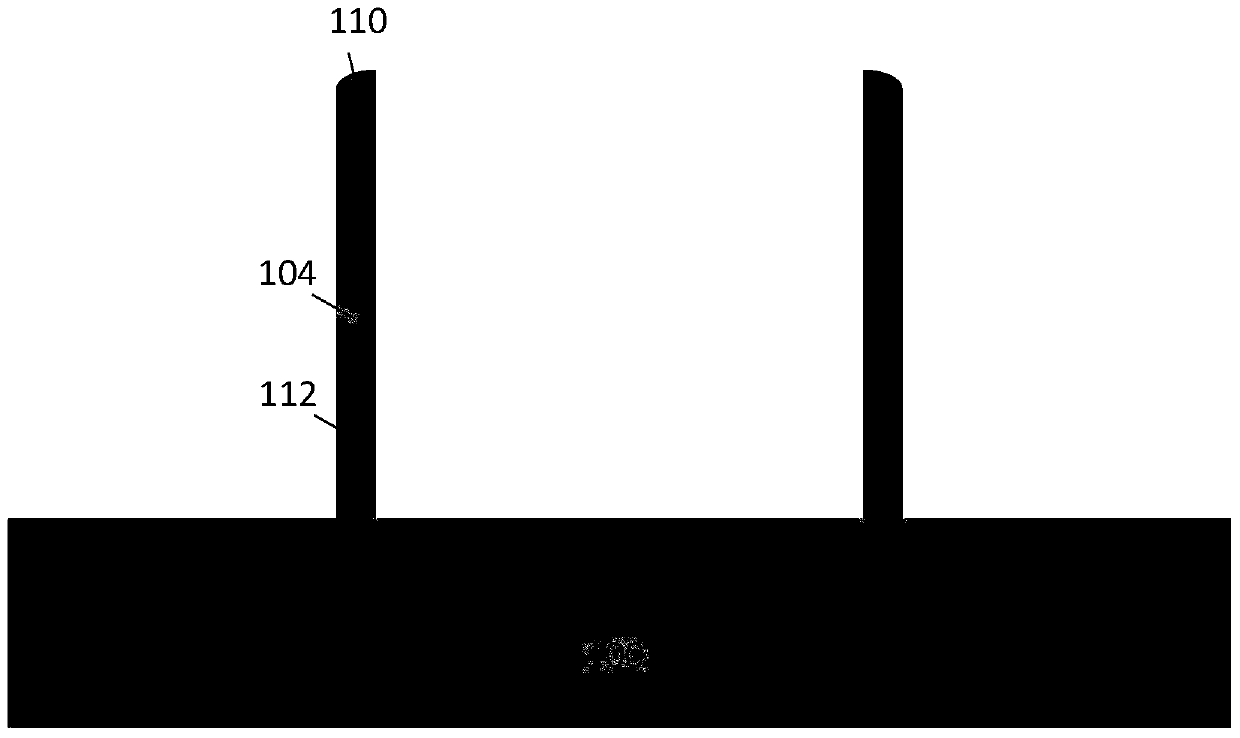Tunneling Field Effect Transistor and Method of Forming the Same
A tunneling field effect and transistor technology, which is applied in the manufacture of diodes, semiconductor devices, semiconductor/solid-state devices, etc., can solve the problems of leakage current destroying sub-threshold swing, difficult to realize narrow tunnel junction, and difficult to turn off devices , to achieve the effect of improving sub-threshold characteristics, reducing leakage current, and increasing conduction current
- Summary
- Abstract
- Description
- Claims
- Application Information
AI Technical Summary
Problems solved by technology
Method used
Image
Examples
Embodiment 1
[0079] First, in step S101, the substrate 100 is provided, refer to figure 1 shown.
[0080] In this embodiment, a silicon substrate is used as the substrate, and the silicon substrate may be, for example, a bulk silicon substrate, an SOI (silicon-on-insulator) substrate or other stacked substrates. In other embodiments, other substrates may also be used, and the substrate functions as a support and an epitaxial base.
[0081] Next, in step S102, epitaxial fins 112 are formed on the substrate, refer to image 3 shown.
[0082] In this embodiment, in order to obtain small-sized fins, for example, the width of the fins 112 is controlled to be about 10 nm or narrower, after epitaxy of a material layer on the substrate, the fins can be formed by the method of transferring the sidewall pattern.
[0083] Specifically, first, a first epitaxial layer 102 is formed on the silicon substrate 100 by an epitaxial process, and the first epitaxial layer can be an epitaxial III-V semicond...
Embodiment 2
[0106] First, in step S201, a substrate 200 is provided, refer to Figure 15 shown.
[0107] In this embodiment, a silicon substrate is used as the substrate, and the silicon substrate may be, for example, a bulk silicon substrate, an SOI (silicon-on-insulator) substrate or other stacked substrates. In other embodiments, other substrates may also be used, and the substrate functions as a support and an epitaxial base.
[0108] Next, in step S202, a first epitaxial layer 202 is formed on the silicon substrate by an epitaxial process, and the first epitaxial layer may be an epitaxial III-V semiconductor material, such as InAs, InSb, SiGe, InGaAs, SiGeSn And so on, other semiconductor materials such as Ge, GeSi, etc. can also be used. These epitaxial materials have higher tunneling probability than silicon substrates. In this way, the tunneling current of the channel can be further improved, and the performance of the device can be improved.
[0109] Then, in step S203, source ...
PUM
 Login to View More
Login to View More Abstract
Description
Claims
Application Information
 Login to View More
Login to View More - R&D
- Intellectual Property
- Life Sciences
- Materials
- Tech Scout
- Unparalleled Data Quality
- Higher Quality Content
- 60% Fewer Hallucinations
Browse by: Latest US Patents, China's latest patents, Technical Efficacy Thesaurus, Application Domain, Technology Topic, Popular Technical Reports.
© 2025 PatSnap. All rights reserved.Legal|Privacy policy|Modern Slavery Act Transparency Statement|Sitemap|About US| Contact US: help@patsnap.com



